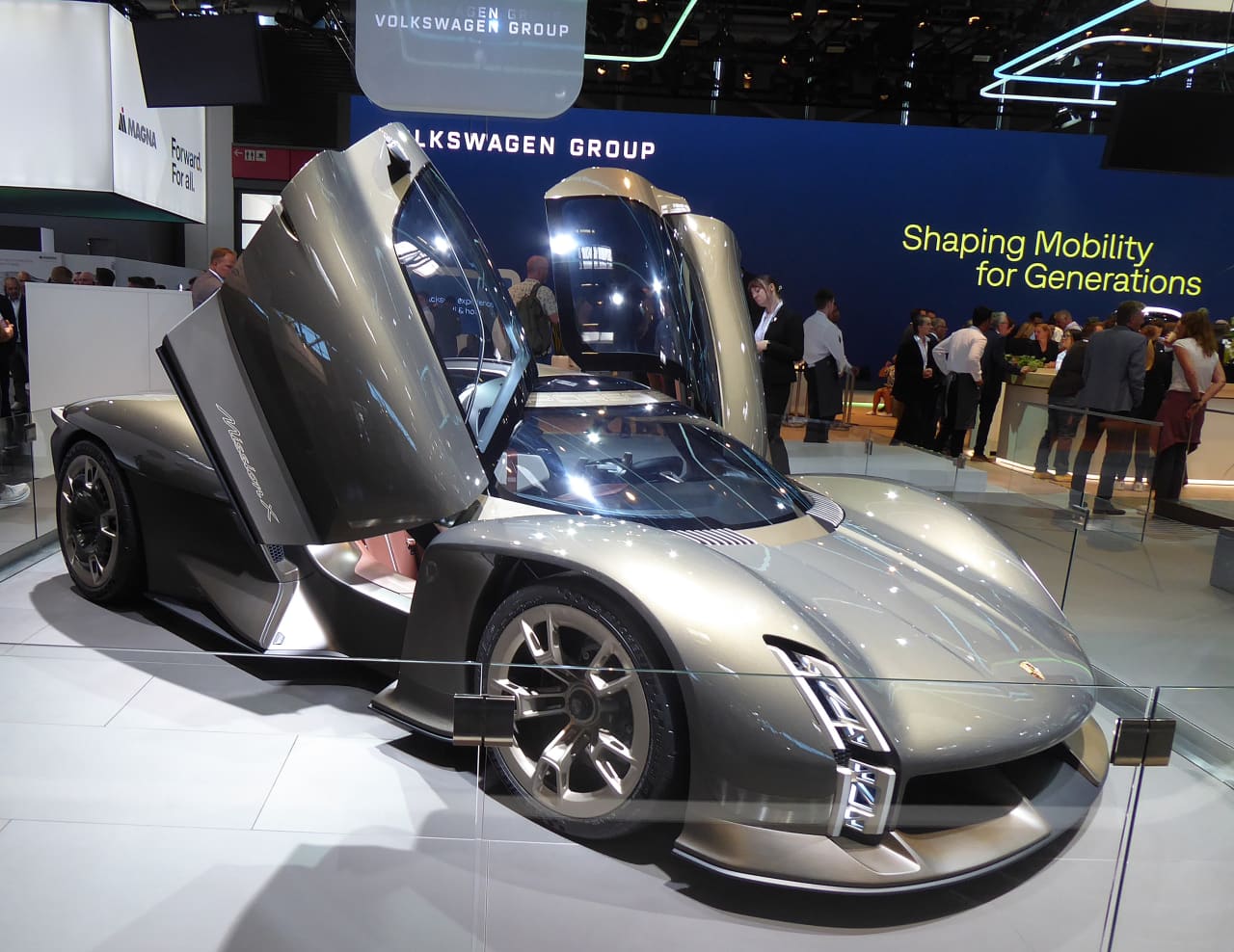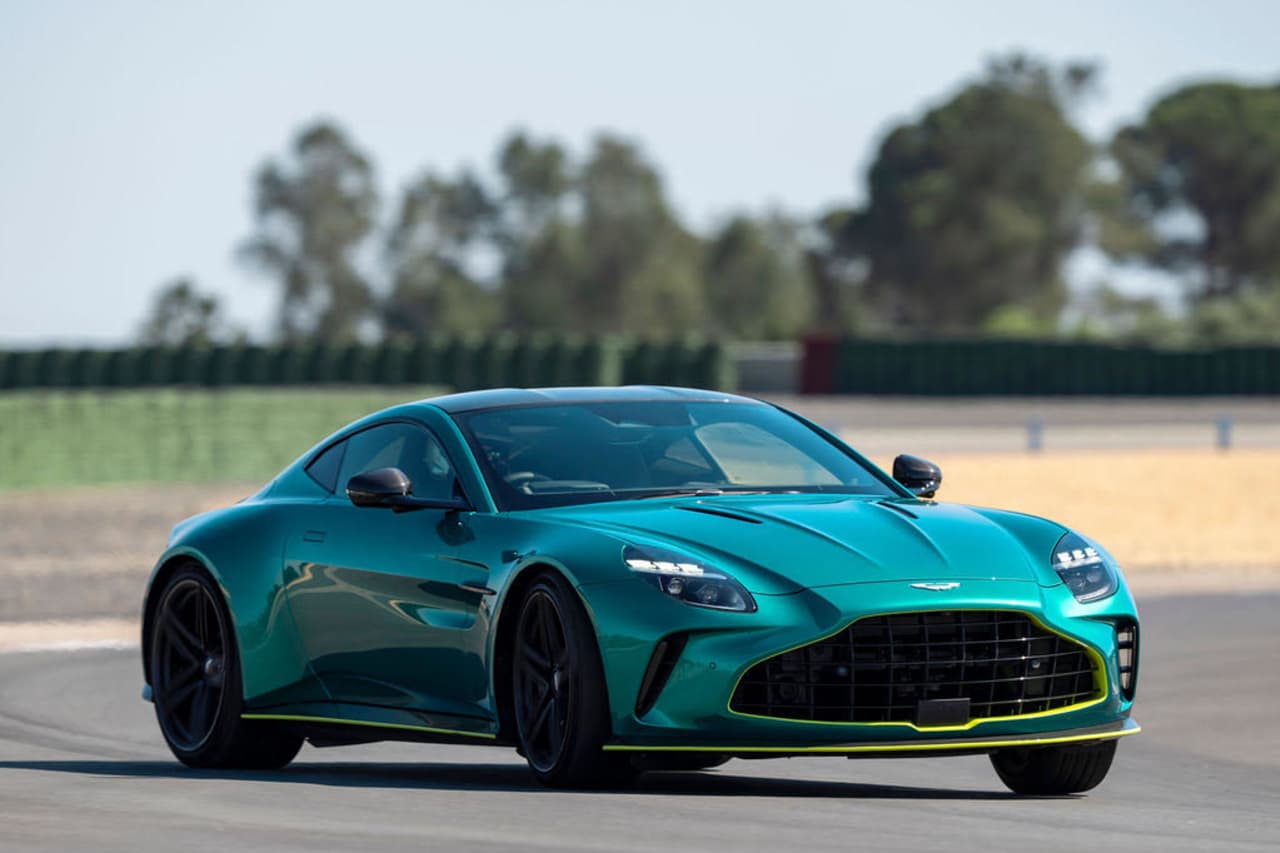From Tesla to Porsche, New EVs Revealed at Germany’s International Motor Show
Roped off on the Volkswagen Group stand at the IAA Mobility auto show in Germany was perhaps the sexiest car present, the Porsche Mission X concept. The supercar is aimed at being the fastest road-legal vehicle at the Nürburgring race track’s Nordschleife loop. The inspiration, on Porsche’s 75th anniversary, was the legendary 1985 959, the fastest series-production car of its time, capable of traveling 196 miles per hour. A more modern ancestor was the 918 Spyder of 2013.
Of late, Porsche, Rimac, and Tesla have been battling back and forth over the electric record at the German track. Rimac took the title Aug. 18 via its Nevera, but the Tesla Model S Plaid Edition with Track Pack has also been a contender, beating Porsche’s Taycan Turbo S.
Despite its racing mission, the Mission X will be a production car and appears totally ready for road work, with a luxurious leather-clad interior. The steering wheel looks like a video game controller, though, and the passenger-side stopwatch is for timing events—with both an analog and digital display. The road version seems likely to become a limited-edition special edition, and if so it should sell out quickly—even at what is likely to be a pretty high price.
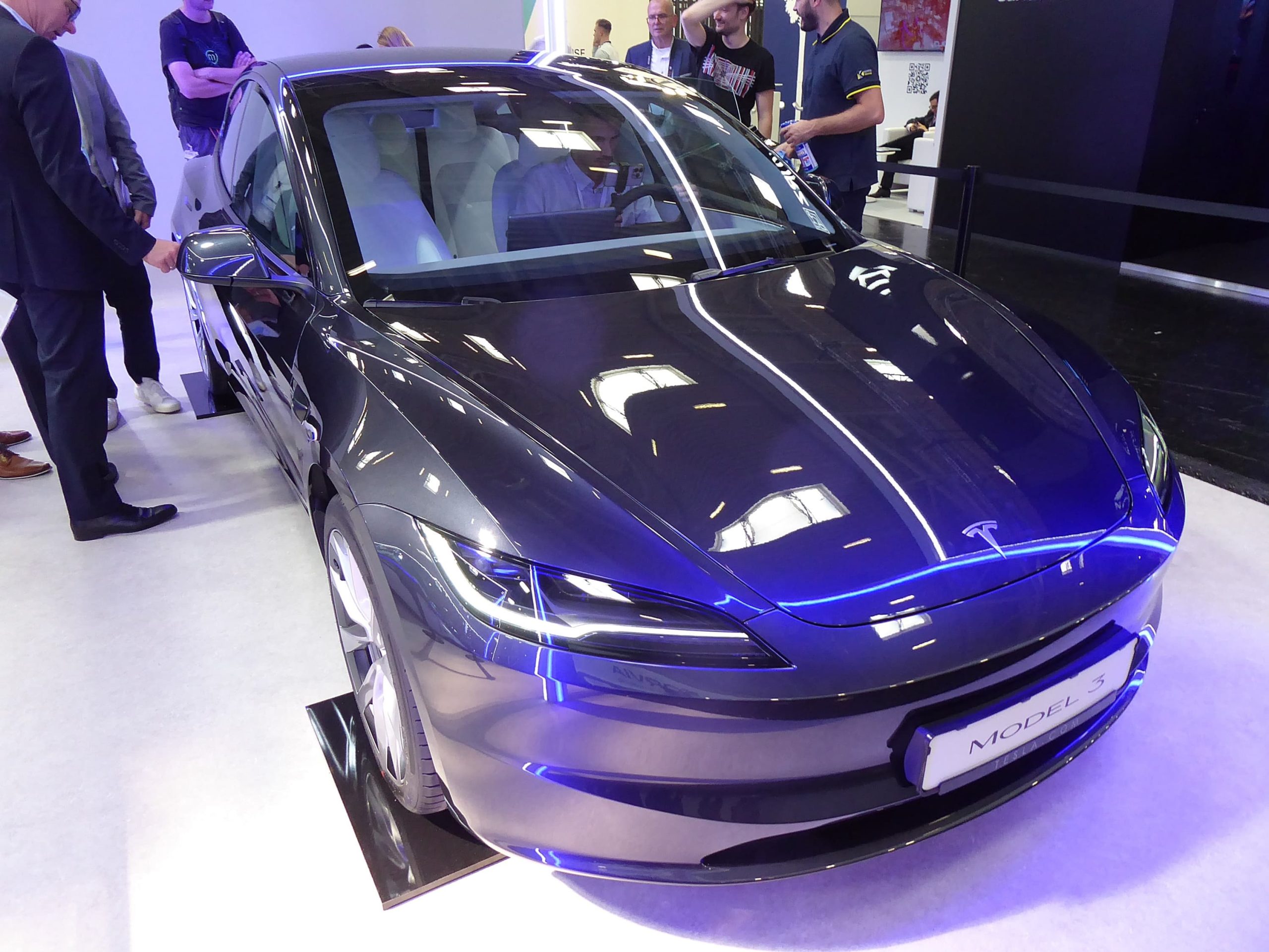
Jim Motavalli
Over at the Tesla booth was the revamped Model 3, which now has a much kinder and more aerodynamic built-to-be-electric nose. It no longer appears to be missing its grille.
Other Model 3 improvements in 2023 include new head and tail lamps, new wheels, fresh aluminium, and textile trim on the interior, customisable ambient lighting and ventilated seats, a quieter cabin thanks to sound-deadening materials and acoustic glass, dual wireless phone charging, available 17-speaker audio and, a somewhat dubious achievement, delete of the turn-signal stalk. Instead, in the name of decluttering the interior, there are a pair of touch-sensitive buttons on the steering wheel. Unfortunately, the wheel turns around so the buttons are not always in the same place. It seems confusing and unnecessary.
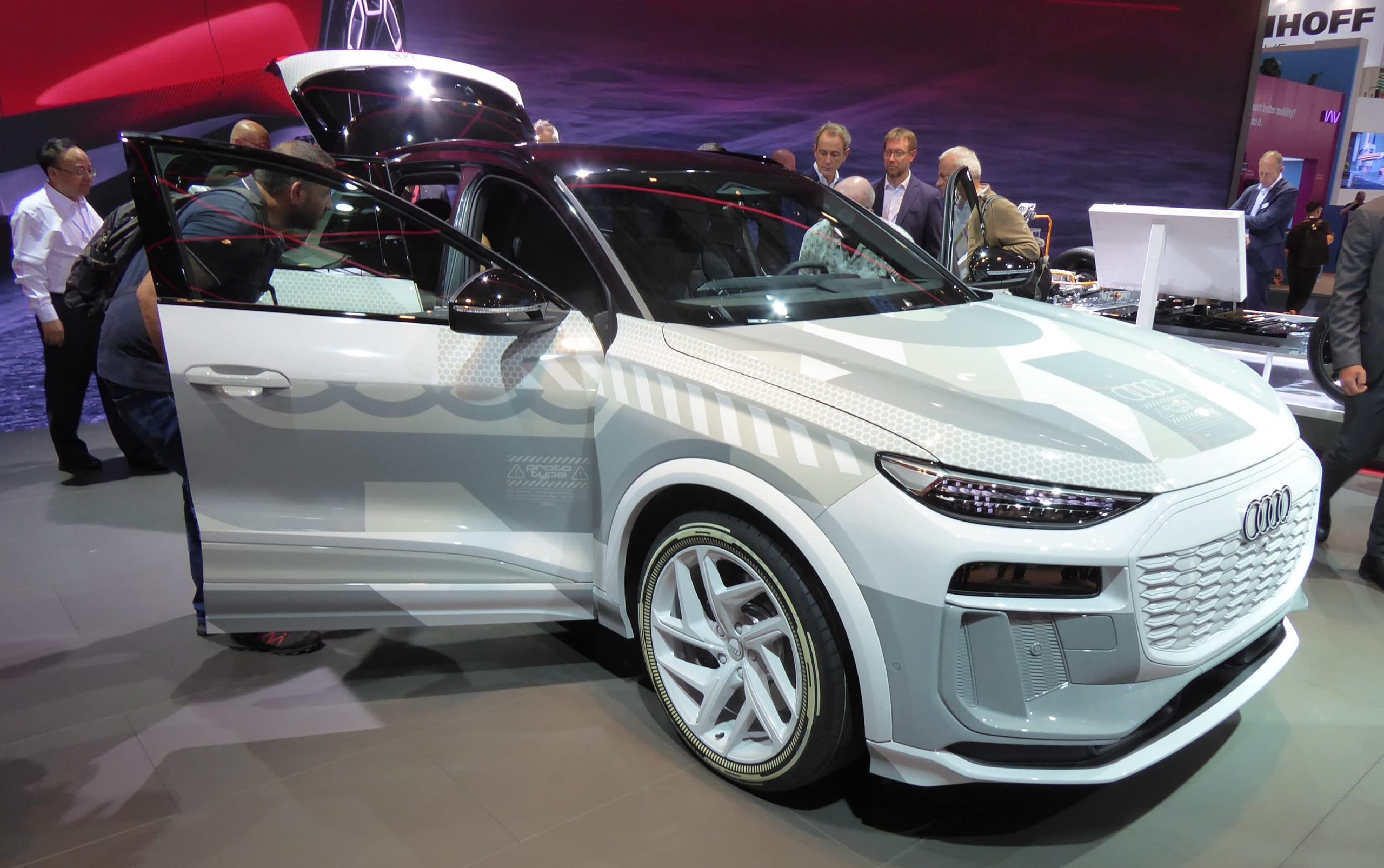
Jim Motavalli
BMW’s most striking exhibit was the Vision Neue Klasse sedan, reviving a name the company used to introduce its winning line of cars in the 1960s. The car sits on a new EV platform that will support six or seven Neue Klasse models between 2025 and 2027. Combining that platform with the sixth-generation BMW eDrive powertrain and more efficient batteries is said to yield a 30% range and 25% efficiency gain over previous models. The concept shown is striking and uncluttered, managing to be futuristic and slightly retro at the same time. The cabin on view was very airy, with large windows and a panoramic sunroof, an interior-dominating central screen, and seats with avocado inserts.
From Audi came the 2025 Q6 e-tron, which is slotted between the Q4 and Q8, and has been tested in 373 and 479 horsepower variants.
Volkswagen itself showcased another electric, the ID. GTI “hot hatch” concept based on the ID.2 (an entry-level EV we didn’t get in the U.S.) The GTI model has always been welcomed by American buyers, so this one could be too. The European price when it goes on sale in 2026 will be approximately US$32,000. VW also displayed the ID.7, a larger EV sedan aimed at executives with a 77-kilowatt-hour battery and a US$67,000 price as shown.

Chinese brands haven’t penetrated the American market yet, but they were out in force in Munich. BYD, the best0selling brand in China, has a large dealer network in Germany already, and showed off its marine mammal-themed Dolphin and Seal models. The Seal is an electric sedan, and its new Seal U variant is a small SUV that uses its technology. The Seal U will have both 71- and 87-kilowatt-hour battery options, and 218 horsepower. That’s not hugely impressive, but the affordable price ($48,000 in Europe) will be a convincer for many buyers. Both Seals had impressive fit and finish, auguring that—if the road performance matches the appearance—BYD is probably ready for U.S. competition.

Jim Motavalli
The venerable British sports car brand MG (an abbreviation of “Morris Garages”) is now Chinese-owned, like Volvo and Polestar. MG has been selling gas, hybrid, and electric SUVs in Europe (16 countries), but at Munich it showed the new Cyberster, a pretty two-seat roadster concept with an electric powertrain. It resembles a beefier Miata more than it does a classic MGB, but it’s definitely attractive. U.S. sales of what was once a popular brand could happen in five to eight years.
Many suppliers were at the show hoping to catch the attention of major automakers. Rimac, which makes its Nevera supercar in tiny numbers, had a stand offering its cutting-edge electric components to other manufacturers. Michigan-based Gentech, a leading maker of the world’s rear-view mirrors, was there showing how technology—from cameras to driver monitoring systems and back-seat kid detection—can be embedded in what was once a simple device. Gentech announced a stake in Israel’s Adasky, which makes tiny thermal cameras that fit just about anywhere.
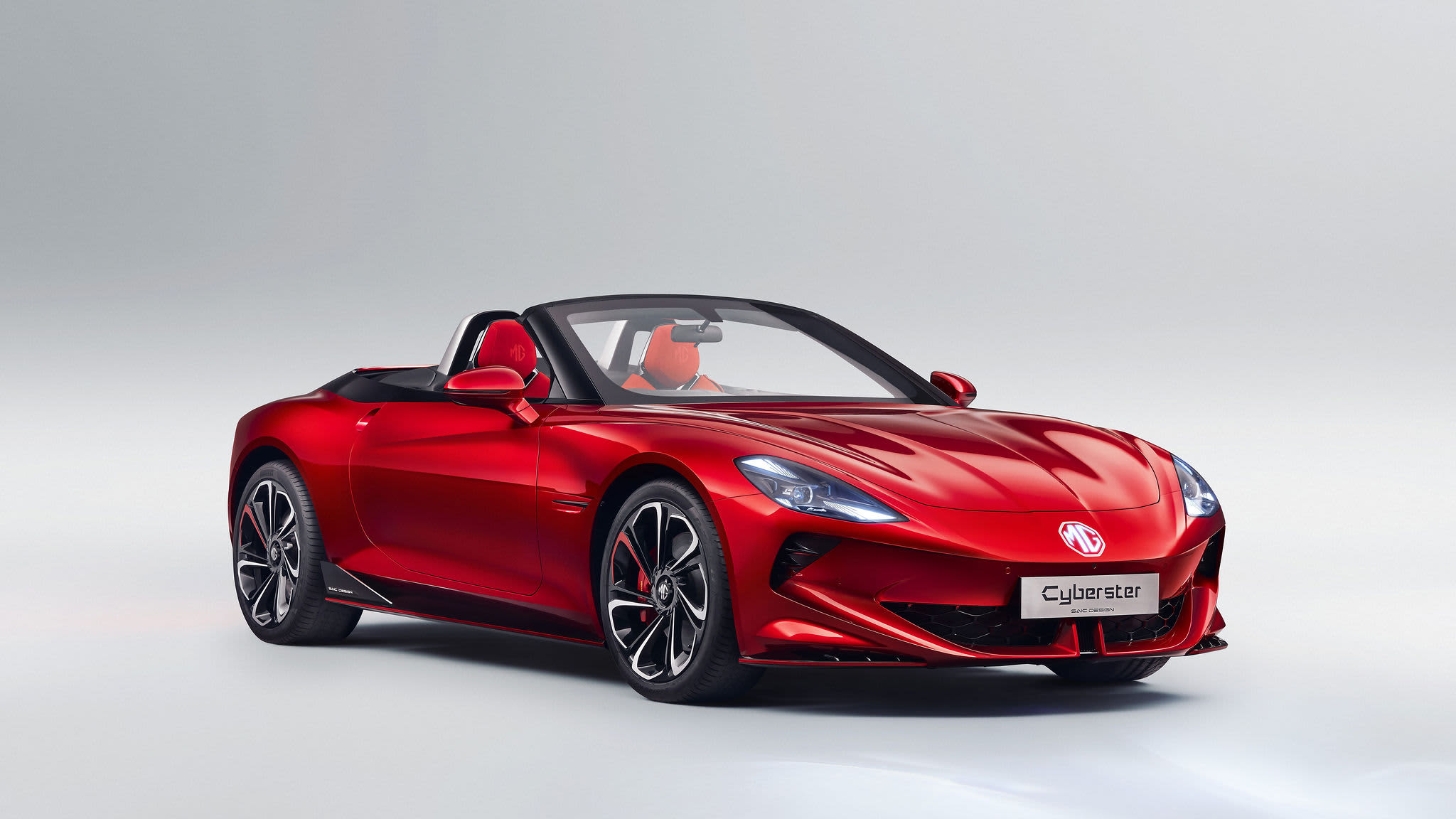
MG
Israel-based Mobileye and Canadian parts supplier Magna International demonstrated their technology for automated driving. Massachusetts-based Nodar revealed its stereo cameras’ ability to see objects in the road at great distances. New York-based J.P. Morgan Chase’s offering was an all-in-one plan for mobility payments—loans, car subscriptions, parking, tolling, and electric vehicle charging. It debuts later this year. And SAE, the standards agency, announced a move into Europe and work on a Battery Passport that will trace the origins of minerals used in their production. “Just as we don’t want blood diamonds, we don’t want blood batteries,” said Fabian Koark, chief operating officer of SAE Europe.
 Copyright 2020, Dow Jones & Company, Inc. All Rights Reserved Worldwide. LEARN MORE
Copyright 2020, Dow Jones & Company, Inc. All Rights Reserved Worldwide. LEARN MORE
This stylish family home combines a classic palette and finishes with a flexible floorplan
Just 55 minutes from Sydney, make this your creative getaway located in the majestic Hawkesbury region.
People spend a lot of money on all sorts of things, only to later ask themselves: Why?
While it may be true that money can’t buy happiness, that doesn’t stop people from trying.
And then wishing they hadn’t.
Many of us have had a big-ticket expenditure that we later come to regret. Maybe it’s something meant to convey status, which we realise later did nothing of the sort. Maybe it was to fulfil dreams of a luxury lifestyle, only to discover that we’ve bought a bottomless money pit.
We asked Wall Street Journal readers to share their stories of pricey purchases that ultimately led to disappointment. Below are some of their stories and reflections—with some free advice to their younger selves.
The wristwatch of his dreams
“It was back in day of wingtip shoes, white shirts and red ties,” says Bryan Desloge, who began his career at IBM in 1984. And like many rookie employees, Desloge wanted to fit in. “I bought suits. I took my earring out. I cut my hair and I registered in the Republican Party,” he says. To complete the look, he paid over $7,000 for the wristwatch of his dreams—a Rolex Submariner. It was a hefty sum, considering he was making roughly $18,000 a year.
Now 64 and retired, Desloge says his younger self saw the stainless-steel watch as a status symbol. “The older guys had nice dress watches already, while I wore a Casio or a Timex.” Just two years after buying the Rolex, however, Desloge realised the timepiece was impractical for him. “The Rolex is great, but I don’t want to look at a clock face,” he says, “and the glow-in-the-dark hands are hard to read at night.”
Desloge, who lives in Tallahassee, Fla., recently tried to give the Rolex to his son, who turned him down. So it remains tucked away in favor of a Garmin smartwatch, which has a fitness tracker, alerts and email, among other features. Purchased for about $500, the Garmin can multitask in ways his Rolex cannot. “I will probably wear that watch for the rest of my life,” Desloge says.
Cabin fever
The family called it “the little brown house,” says Michael Kotas of his vacation cabin in the mountains overlooking Tucson, Ariz. In 2005, Kotas and his wife paid $120,000 for the 1950s cabin, and it needed a lot of work.
“We bought it from an older couple, who had dark rugs and wood paneling,” says Kotas, who is now in his mid-60s and retired from a job in technology sales. He redid the cabin “with a cool Manhattan vibe,” updated the electrical wiring and corrected a flooding issue in the basement. In all, Kotas estimates he spent $60,000 in upgrades.
But his financial headaches were far from over.
Even though Kotas owned the cabin, the federal government owned the land it sat on, since it was located within the Coronado National Forest. Leasing the land cost $800 a year when the cabin was purchased, but eventually grew to $3,600 a year by the time it sold.
During that time, two fires came within 100 yards of the cabin, jacking up Kotas’s fire-insurance premiums. Then, a species of bark beetle attacked ponderosa pines there, and the Forest Service required cabin owners to remove infested trees around their property, costing $1,000 to $1,200 a pop. “I counted all my trees around my house and thought, ‘I can’t afford this.’ ”
Over time, Kotas’s children didn’t want to go to the cabin anymore, saying “there was nothing to do,” he says. “We ended up spending about five nights a year there for the last several years.” Kotas, whose year-round home also is in Tucson, came to the realisation that he wasn’t getting his money’s worth. “It became an albatross,” he says.
The tipping point came when a man parked his truck just 100 feet from the cabin and lived out of his vehicle on the side of the road. Kotas sold the cabin in 2022 for $195,000.
“I would probably never buy a vacation home again,” he says. “It was a tough lesson to learn. I wish the [new] buyers well, but all I can say is, ‘Good riddance!’ ”
RV to nowhere
After retiring from a career in ophthalmology, Gordon Preecs bought a large pickup truck in 2013 and a 22-foot travel trailer in 2017 with the dream that he and his wife, Connie Preecs, would visit national parks around the country. Combined, the new vehicles cost around $50,000.
Living in Seattle at the time, the couple started out by taking the RV on short trips, such as an event for woodcarvers in Washington state. It didn’t take long for them to feel pinched in a 120-square-foot RV. “I thought we’d have our own hotel” with an RV, says Preecs, who is now 75 and living in Round Rock, Texas. “But we had to just shove things in there. The kitchen counter was hand’s breadth wide, and the bathroom was like a phone-booth shower. If I dropped the soap, I couldn’t pick it up.”
Three years after purchasing the trailer, Preecs and his wife relocated to Texas to be closer to their grandchildren. Still, they were able to visit Grand Teton and Yellowstone national parks in the Northwest. That’s when they felt the financial pinch of RV ownership.
“At 6 miles per gallon and $60 to $80 a night at RV parks, the expenses really added up,” he says. “We found it was an inefficient way to travel.” Some of the RV parks are located in funky, backwater places, he says. And setup and breakdown at every stop became a hassle. “You want to be free, but you’re not.”
In 2020, they sold the trailer, which had less than 5,000 miles of use, and the pickup for a combined $32,000. With the proceeds, Preecs bought a Tesla.
Outfitted and outwitted
As a vintner in California, much of Pam Starr’s work takes place outside among the grape vines. “I live in jeans and winemaker vests, T-shirts and sometimes boots,” says the 63-year-old. “So I can tear my clothes on a vine or get barrel slime on me” and it doesn’t really matter.
A few years ago, a well-heeled friend with an eye for fashion convinced Starr, who lives in Napa, to join her in San Francisco for a meeting with her couturier—a person who creates luxury clothing to the client’s specifications. The friend had told Starr that she wouldn’t have to buy anything, but this particular couturier was very persuasive, Starr recalls.
For example, the couturier held up a gauzy swimsuit coverup with white sequins and said, “You have to wear this swimsuit coverup by the pool.” Starr paid $1,800 for a custom coverup, but later it hit her: “I don’t wear a coverup when I’m at the pool because I’m actually in the pool.” To this day, it has never been worn. Starr says she spent another $1,800 for an off-the-shoulder silk shirt with three-quarter length sleeves.
The quality of the clothing was low, Starr says. “That silk shirt turned out to be my most disappointing piece,” she says. It didn’t clean well, and hasn’t retained its shape. Many of the pieces she purchased haven’t held up well, she says, even though she rarely wears them. “Out of the 15 items I had made for me, I loved maybe three,” Starr says. “That’s more than $20,000 worth of clothes, and I should have gotten more out of them.”
If she could go back in time, Starr says, she would say to herself, “ ‘Listen, Pam. Pick two things and start slowly. If you like them, you can expand into other things.’ ” Also, she would pause to ask herself how often she would actually wear the clothing.
“Because of a friend, I ended up in a couture shop,” Starr says. “In that world, it’s uncharted territory for me. The couturier pulls you in really hard.” Knowing what she knows now, Starr says, “if I needed someone to design a gown for me, I wouldn’t go back there. I would go to a seamstress locally.”
Just 55 minutes from Sydney, make this your creative getaway located in the majestic Hawkesbury region.
This stylish family home combines a classic palette and finishes with a flexible floorplan









